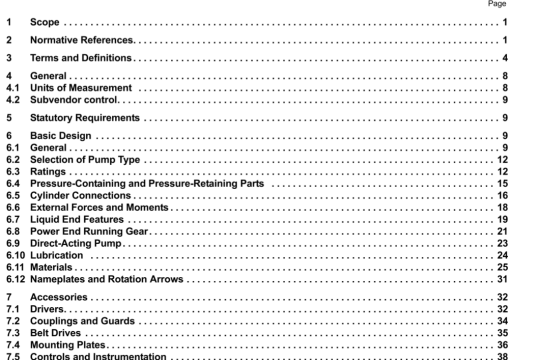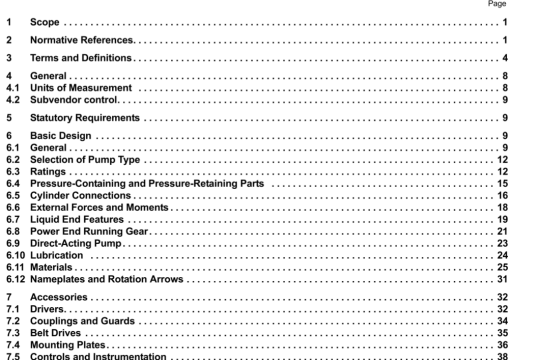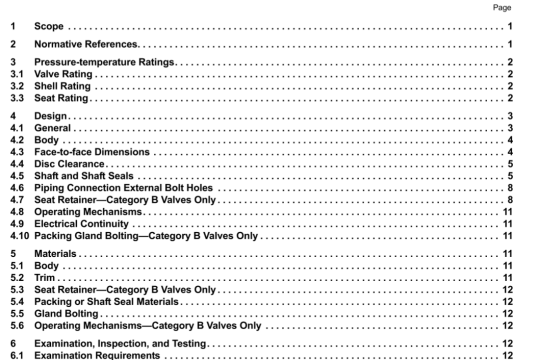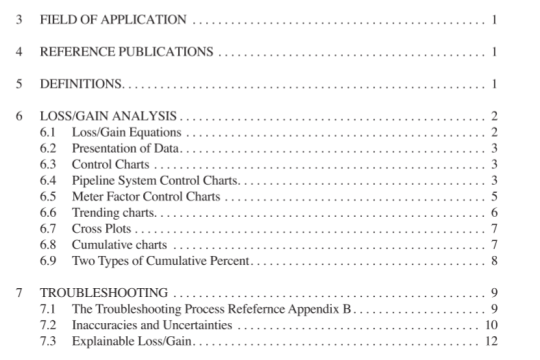API MPMS 14.1:2006(2011) pdf download
API MPMS 14.1:2006(2011) pdf download.Manual of Petroleum Measurement Standards Chapter 14——Natural Gas Fluids Measurement Section 1—Collecting and Handling of Natural Gas Samples for Custody Transfer.
6.3.2.1 Adsorption
Adsorption occurs both chemically and physically. (‘hemical adsorption is due to a reaction between the gas molecules and the solid surface molecules.
Physical adsorption occurs because free surfaces, such as the inner surfaces of tubing or sample containers, tend to attract gas phase molecules. For a given surface and gas molecule, the extent at physical adsorption depends on the amount of surface area and the pressure and temperature. (‘hanging the pressure and’or temperature could either adsorb or de-sorh gas molecules.
Sample distortion due to chemical and physical adsorption can be minimized by prudent selection of sampling system materials, In general, materials and coatings that are chemically inert and of minimum porosity are the best choices.
6.32.2 L)quldlGas Interfaces
Another surtace et)ect that causes gas sample distortion occurs between gas molecules and the surfaces of some liquids. Itydrocarbon liquids can dissolve significant amounts of natural gas components. This is especially important if the sampling system or sample container has been exposed to liquid hydrocarbons.
Proper cleaning procedures will minimize the potential for this problem. See 6.5. (‘kaniiaes&
6.3.2.3 Plastic Tubing
With the exception of Nylon II or equivalent, most plastic tubing tends 10 cause gas sample distortion and is not recommended as a gas sample conduit for hydrocarbon analysis.
CAUTiON: Be careful not to apply direct heat or high temperattar heat tracing to any plastic tubing. including Nylon II
6.3.3 Residual Impurities
Gas sample distortion can be caused by residual impurities such as air or previous samples and they may be difficult to detect. For example. a gas ehromatograph not configured to detect oxygen will show a residual of air as increased nitrogen. This type of impia’tv might not be detected. If a small amount of the previous gas sample was left in the sampling system or sample container. it might not be detected either.
Strategies for removing residual impurities involve purging, evacuating and repeated fillempty cycles. Sample distortion due to the presence of residual impurities maybe a problem if any of these methods are performed poorly. If there are leaks in any valves or seals these methods may not work, even if the procedures are pert’ormed correctly.
6.4 REVAPORIZATION
Section 6.3.1, Phase Changes, identifies a phase chatige as one cause of gas sample distortion. This type of sample distortion will base a significant impact on the integrity of the gas sample.
If the gas phase of a partially condensed sample contained in a sample container is analyzed. the heating value and density of the sample will be biased and the remaining sample will no longer be representative of the sample source.
Ira gas chromatograph’a calibration gas standard experiences a phase change and calibration occurs while the calibration gas is still in two phases. all analyses perfonned from that point forward will be biased. Furthermore, the composition of the calibration gas standard will have changed.
The integrity of the sample (and the calibration standard) can be recovered by heating the containers if no fluid (gas or liquid) is withdrawn prior to revaporization. Care must be taken to ensure that all condensed gases are resaporized when a gas sample is analyzed in a laboratory.
Solvents, such as acetone and liquid propanc. that do not leave a residue after diyin are gcilcrally acceptable for rcmoving most heavy cnd.s contamination. although they may sometimes present haiards such as flammability and toxicit) Dixon (‘ontrad’° 70 washing also produces acceptable results that compare well so the solvents. Other solvents chemically equivalent to Decon can reasonably be cspeclcd to produce acceptable results, however, Ihcir ctfcctis’cncss must be tested poor to u.sc.
Supereritical carbon diosidc cleaning produces accepuble results. in spite of the fact that some dirty hydrocarbon spot trails may be left in the cylinder after it is cleaned.
If. IRN1NG:carbon dioside to clean cylinders can be hisaurdous due to 11w phslcal properties of 11w fluid and thc high pressures iand loss temperatures insohcd and should be used ssith great caution.
Sample containers must be dried and purged alter wCt ckaning procedures leg., wet swami. Evacuating the cylinder to I millimeter of mcrcwv absolute 133 Paabsi (near perfect vacuum) or less ssill eliminate thc residual liquid. Nitrogen. helium and thy instrument quality air are good csamplcs of gases that may be used to thy or purge cylinders that tare free of deposits and heasy hydrocarbon conta1nination.




